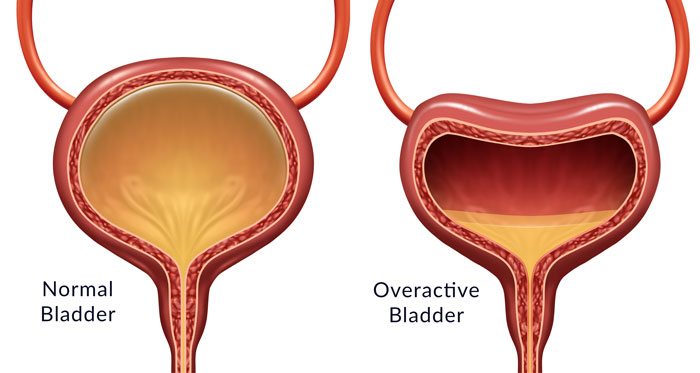Overactive Bladder
By Ann Humphries, Advanced Nurse Practitioner in Urogynaecology & Women's Health
Overactive Bladder (OAB) symptoms are caused by the bladder muscle squeezing to empty urine inappropriately. This often happens without warning, and when you least want it.
OAB is the name given to the following collection of bladder symptoms:
- Urgency- a sudden and intense need to pass urine. This can happen even when your bladder is not full. Sometimes you might not be able to make it to the toilet in time and leak. This is called urge incontinence.
- Frequency - going to the toilet many times during the day (typically more than 7).
- Nocturia - waking up more than once at night to go to the toilet.

OAB affects women (and men) of all ages and is not simply a result if getting older.
Your Doctor or Nurse will test your urine to rule out an infection which is a common cause of OAB symptoms. The amount and type of liquids that you drink may also contribute to your symptoms. For example, caffeinated drinks significantly worsen OAB symptoms.
Some of the tests available include:
- Urinalysis - testing a sample of your urine to find out if there is an infection or blood in the urine.
- Residual urine - using an ultrasound machine (or sometimes inserting an small catheter) to check whether you are emptying your bladder properly.
- Urodynamics - this test is able to examine the activity of the bladder muscle as it is filled with fluid.
Simple changes you can make to improve your lifestyle which can significantly improve your symptoms include:
- Drinks containing caffeine. For example, coffee, tea and cola can significantly worsen OAB symptoms.
- Bladder Training encourages you to create new, healthy habits to help you hold more urine in your bladder by going to the toilet less often.
- Medications. There are a variety of different medications that can help with an overactive bladder. The medications are designed to enable you to hold on for longer, reduce how often you need to go to the toilet (both during the day and night) and reduce leakage.
Changing fluid intake, bladder training and medications work for the vast majority of women with OAB. However, a small number will have symptoms that persist despite these treatments. In this case, the following treatment might be offered;
- Botulinum toxin can be injected into the bladder via a telescope under local anaesthetic. It causes relaxation of the bladder muscle, helping with the urgency and allowing the bladder to store more urine.

